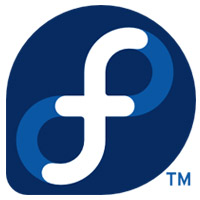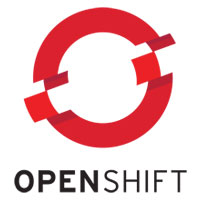
The Fedora Mission on Tuesday introduced the overall availability of Fedora 28, which introduces a brand new device supply machine in response to a modular repository.
The brand new machine supplies choice variations of the device and updates that include the default free up, in keeping with Fedora Mission Chief Matthew Miller. It allows customers to replace particular elements on the velocity that meets their wishes. Modularity offers customers extra keep watch over over their computing environments.
Fedora Linux is the unfastened neighborhood model of Pink Hat Endeavor Linux, or RHEL. Fedora 28 continues the tactic of liberating 3 variations — constructed from a not unusual set of base applications — that focus on other person bases. They’re Fedora 28 Server, Fedora 26 Workstation and Fedora 28 Atomic Host.
“The Fedora Mission is likely one of the maximum vital validation platforms for Pink Hat Linux,” stated Rob Enderle, main analyst on the Enderle Staff.
“The modularity of the trouble makes it uniquely able to offering the suitable capacity wanted for the particular goal via enhanced keep watch over for its customers,” he informed LinuxInsider.
Improve Highlights
All editions of Fedora 28 function a large number of malicious program fixes and function tweaks in addition to new and enhanced additions. The Fedora 28 base package deal gives up to date compilers and languages, together with the newest model of the GNU Compiler Assortment (GCC) 8, Golang 1.10 and Ruby 2.5.
All 3 Fedora 28 editions additionally deliver enhancements to Virtualbox visitor strengthen. They simplify the person enjoy in working Fedora 28 as a Virtualbox visitor on different running techniques.
“The Fedora Mission’s venture is to deliver modern innovation to our customers, and Fedora 28 delivers on that during the addition of one of the most newest open supply applied sciences, together with GNOME 3.28 and Kubernetes 1.9,” the Fedora Mission’s Miller stated.
Fedora Spins the Choices
Fedora is a big challenge that doesn’t have compatibility right into a one-size-fits-all Linux distribution. Having other editions permits the challenge to focus on the wishes of various person teams.
“That’s why we’ve got the Fedora Editions, which can be targeted at more than a few specific person audiences, in addition to our more than a few Labs and Spins, which deal with niches no longer lined through the ones,” Miller informed LinuxInsider.
As well as, Fedora 28 gives Spins, or choice desktops, that focus on particular use circumstances. Amongst them are KDE Plasma and Xfce Desktop and Labs.
As an example, a well-liked Lab version is the Python Lecture room Lab, which supplies a very simple, out-of-the-box atmosphere for educating the Pyton programming language. Another choice is the Robotics Suite, which mechanically has been used to win world-class robot football competitions.
New Workstation Gear
The most recent model of Fedora’s desktop-focused version contains new gear and lines for basic customers. Fedora 28 Workstation additionally upgrades customers to GNOME 3.28. The most recent GNOME model provides the aptitude to set favourite information, folders and contacts for more straightforward group and get right of entry to.
Fedora Workstation is designed to be the most efficient desktop atmosphere for device builders, from scholars to startups to venture builders. Whilst it supplies polish for basic customers, the objective for options and UI selections is builders, Miller stated.
The brand new Utility Utilization software supplies a generation preview to assist customers diagnose and get to the bottom of efficiency and capability problems extra simply. Fedora Workstation 28 additionally introduces GNOME Footage because the default photograph control software, offering a easy software for viewing, surfing and organizing footage.
Further improvements come with Thunderbolt 3 connection strengthen and stepped forward emoji strengthen. Lively-by-default energy saving options make stronger computer battery lifestyles.
Fedora 28 Server
The Fedora 28 Server version’s most important addition is the brand new modularity initiative. Modularity is crucial part for programming stacks and database circumstances, giving directors extra alternatives amongst device variations they may be able to deploy and strengthen.
Fedora Server delivers improvements to the extra conventional Linux server, reminiscent of new approaches like Modularity.
Moreover, Fedora 28 Server contains strengthen for AArch64 as a number one structure. It supplies an extra running machine possibility for techniques directors taking into consideration rising {hardware} applied sciences.
Fedora 28 Atomic Host
Fedora Atomic Host is designed to supply a minimum footprint running platform. This makes it a well-suited possibility for working containerized workloads throughout more than a few footprints, together with the general public cloud.
It shall we customers run the image-based all-in-one-containers means that Atomic Host is designed to care for.
To be had with a two-week refresh agenda, Fedora Atomic Host features a base picture for growing digital machines, an Atomic Host picture for growing container deployment hosts, and base container photographs to leverage as a kick off point for Fedora-based containerized packages.
New for Fedora 28 Atomic Host is the inclusion of Kubernetes 1.9. This model provides a large number of cutting edge options for orchestrating container-native workloads.
Modularity Defined
The Fedora crew’s function is to stay the bundled device in each and every free up very just about the present device free up. As an example, the newest model of the Django Internet framework is two.0, and that’s the default model in Fedora 28.
One fear because of Fedora’s fast lifestyles cycle is that customers would possibly lack continuity from one free up to the following. Some particular device stacks will have to replace extra slowly.
On different enterprise-focused distributions with a slower lifecycle, modularity may well be used to assist deal with the other downside. Modularity makes more recent device to be had when the bottom running machine has an entire life of a decade or extra, Miller stated.
In relation to working Django Internet framework, a large number of device nonetheless depends upon 1.6. In case you must want that, the one choices can be to run an outdated, out-of-date Fedora OS model that will no longer get safety updates or no longer use Fedora in any respect, Miller defined.
The modular repo is a selection of device with trade variations, he added. Fedora 28 contains the Django 1.6 model. So, you’ll use the “dnf module” instructions to make a choice that model on techniques if wanted.
Other Way
Modularity in Fedora 28 is an enhancement to the prevailing package deal control machine and is carried out as an extension to DNF. The important thing factor is that it means that you can make a choice other streams of to be had device.
After getting accomplished that, installations and updates to applications keep inside the movement you may have decided on. So, Django 1.6 received’t replace to two.0 and not using a handbook transfer, in keeping with Miller.
“From a person viewpoint, this isn’t an entire new manner of doing issues, just like the transfer to boxes could be. It is only the package deal supervisor getting smarter about dealing with other variations of the similar factor,” he stated.
No longer a Snapcraft Selection
“Customers want extra flexibility, and we wish to supply that to them,” Miller stated. “There are alternative ways to package deal up device so other variations can coexist, however they have a tendency to have a large number of overhead on our facet, and be rather difficult from a person viewpoint. Modularity makes either one of the ones issues more straightforward.”
Fedora does strengthen the Snapcraft technique of turning in fast device updates by means of snap applications, he stated. On the other hand, Fedora’s modularity means isn’t the same as snaps.
“It’s extra related to the Amazon Linux Extras Repository, which is some other — albeit rudimentary — manner of offering trade variations of device,” Miller added.
“Modules can give a supply of device which may be used to construct OCI/Docker boxes, Flatpaks, or Snaps,” defined Miller. “This is likely one of the causes we’ve got selected construction blocks as a part of the brand new emblem for Fedora Server.”



